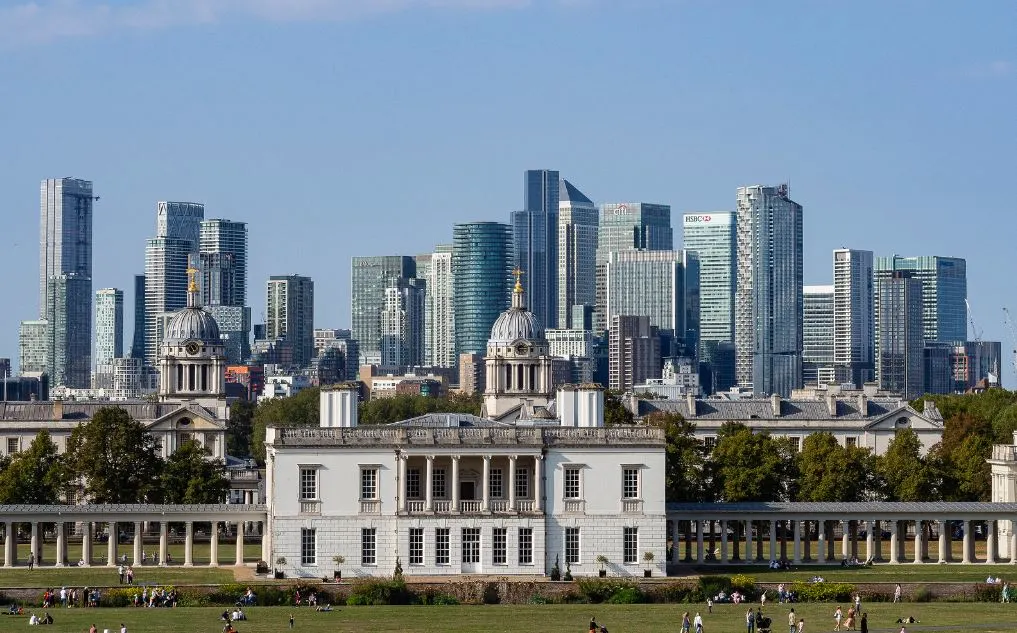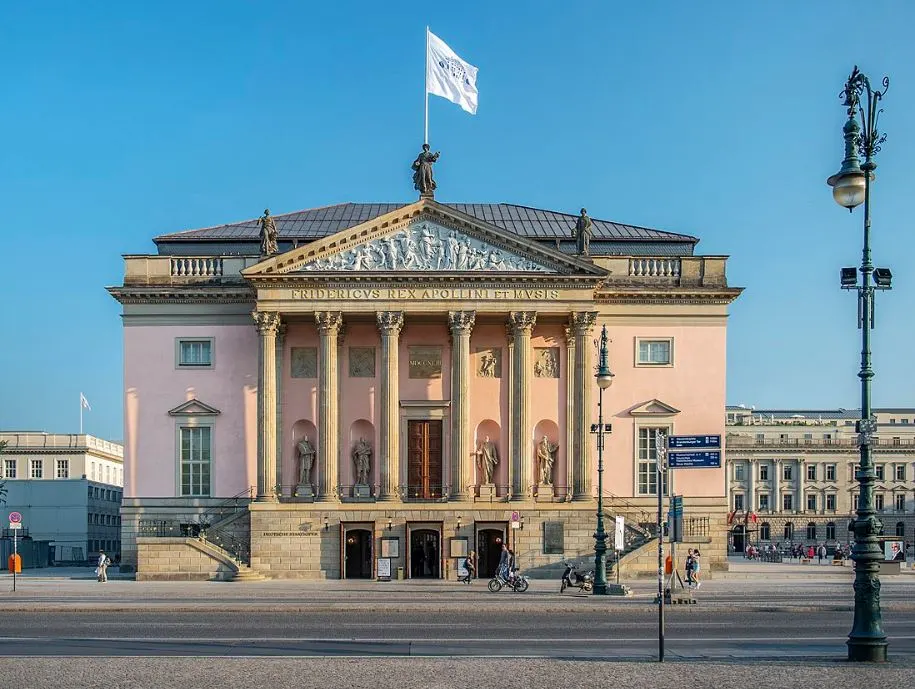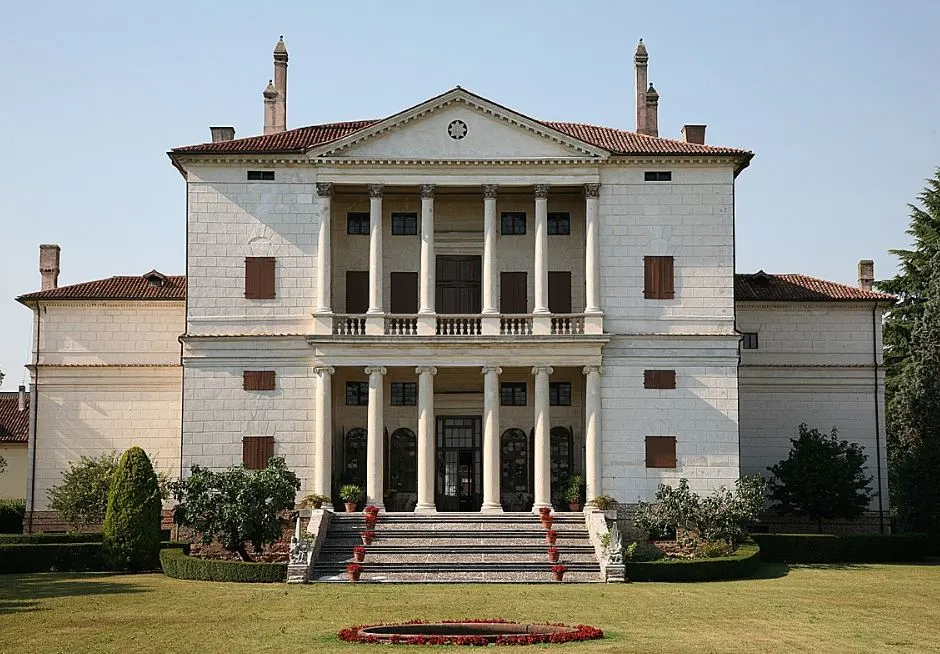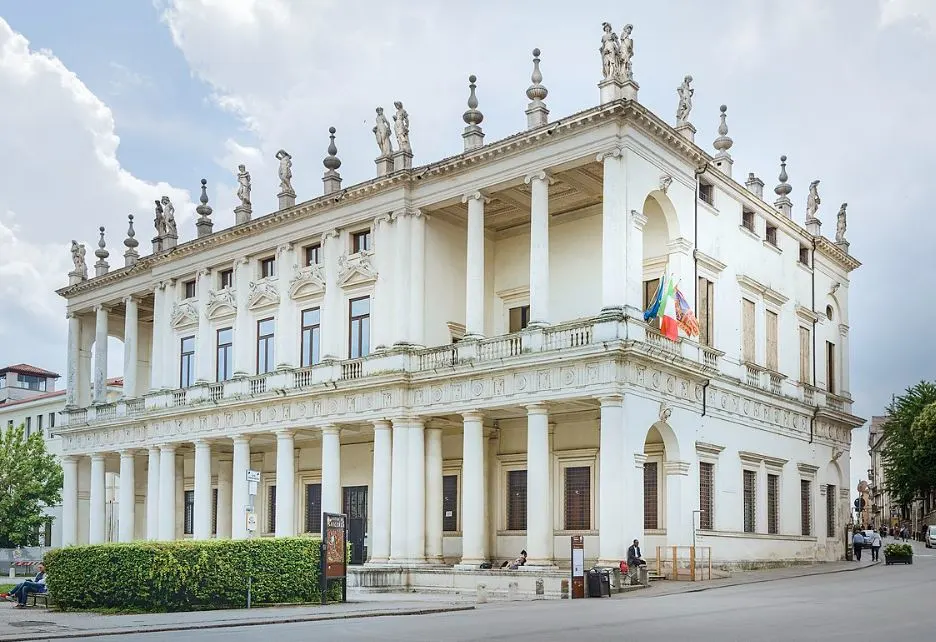This beautiful architectural style is named after a renowned Venetian architect who live and worked in the Republic of Venice in the 16th century.
Andrea Palladio (1508-1580) was highly influenced by ancient architecture, especially Greek and Roman. He developed a style of symmetry and perspective inspired by ancient architect Vitruvius (80-15 B.C.).
His work transformed into Palladianism in the 17th and 18th centuries and inspired architects all around the world, especially in Great Britain and the United States.
The Venetian architect designed 23 buildings in the city of Vicenza and 24 villas in the countryside of the Veneto Region.
Together, these are known as the “City of Vicenza and the Palladian Villas of the Veneto,” a UNESCO World Heritage site that was designated as such in 1994.
In this article, you’ll discover some of the most famous examples of Palladian architecture, a list that includes both Palladian and Neo-Palladian buildings.
1. Villa Godi – Lugo di Vicenza, Italy
Villa Godi is one of the many villas that Andrea Palladio designed in the Veneto region in the northeastern corner of Italy. The villa was constructed between 1537 and 1542 and is, therefore, one of the earliest completed projects by the famous Renaissance-era architect.
The most notable features of this remarkable mansion are the lack of ornamentation and the symmetrical elements that define the building’s design. His style developed immensely during the next couple of decades as he aimed to incorporate buildings that fit into their surroundings, which is not the case with this villa.

2. Villa Capra (La Rotonda) – Vicenza, Italy
Villa Capra is a Palladian building that is also known as La Rotonda. It’s located on top of a hill just outside of the city of Vicenza and majestically overlooks the beautiful Italian landscape. The building was designed in such a way that it provides the same view from all 4 sides which is quite amazing.

The villa has a square plan and features 4 similar façades on all sides. Each of them features a typical Neoclassical element which is a portico that was based on ancient Roman temples. The building is centered around a central space topped by a dome. The interior of this villa is even more beautiful than the exterior.

3. Queen’s House – Greenwich, London, United Kingdom
Queen’s House is the name of a former royal residence that is located in the London Borough of Greenwich. It was constructed between 1616 and 1635 and was commissioned by Anne of Denmark, the queen of King James VI and I. As you surely guessed, this is how this structure got its name.
The building is considered to be the ultimate masterpiece of architect Inigo Jones (1573-1652), one of the first major English architects in modern times. He incorporated the rules of symmetry and proportion into his designs something that is reflected in the huge wings that adjoin the building on both sides.

4. Basilica Palladiana – Vicenza, Italy
The Basilica Palladiana is one of the most amazing buildings in Vicenza and dominates the Piazza dei Signori in the historical heart of the city. The most notable feature of the building is the loggia which features elements that are today referred to as “Palladian Windows.”
This is one of the buildings in which Andrea Palladio had a hand but which predates his work. The original Gothic building dates back to the 15th century and the massive brick tower that adjoins it was already present in the 12th century. It is, however, one of the buildings that make up the UNESCO World Heritage site of works dedicated to the Italian architect.

5. Monticello – Charlottesville, Virginia, United States
Monticello is the name of the plantation that was once owned by Thomas Jefferson (1743-1826), one of the Founding Fathers of the United States and the third president of the country. It’s located just outside of Charlottesville, Virginia, and the centerpiece is the plantation house, a beautiful Palladian building.
The building is located near the University of Virginia which was also commissioned by Jefferson. One of the most prominent buildings of this facility is “The Rotunda,” another example of Palladian architecture that became a UNESCO World Heritage Site in 1987.

6. Berlin Opera House – Berlin, Germany
The Berlin State Opera is also known as the “Staatsoper Unter den Linden,” a reference to the major avenue in central Berlin where it’s located. This beautiful opera house was initially constructed between 1741 and 1743 and commissioned by Prussian king Frederick the Great.
The original building was destroyed during World War II but rebuilt to its former glory between 1951 and 1955. It was one of the many reconstruction projects that took place at the Bebelplatz, an area in Berlin also known as the “Forum Fridericianum” square.

7. Castletown House – Celbridge, Ireland
Castletown House is a huge mansion located in Celbridge, County Kildare, in the eastern part of Ireland. It was constructed in 1722 as the opulent country house of William Conolly (1662-1729), the Speaker of the Irish House of Commons who was a wealthy lawyer and landowner.
The interior of this enormous building is dominated by several major rooms, including reception rooms, a drawing room, staterooms, and the so-called “Long Gallery.” The latter is decorated with Pompeii-style frescoes in red, blue, and gold and has a length of 24 meters (80 feet).

8. Villa Cornaro – Piombino Dese
Villa Cornaro is the name of a beautiful mansion that is located in Piomino Dese, a rural town about 30 kilometers (18.64 miles) northwest of Venice. It’s another early work by Andrea Palladio that was completed in 1554. It was also one of the villas that were mentioned in Palladio’s 1570 book ‘I quattro libri dell’architettura’ or “The Four Books on Architecture.”
Because of this and the unique approach to its design, this villa became one of the most influential buildings all around the world in the centuries after it was completed. The original version of Jefferson’s Monticello was based on its design.

9. Holkham Hall – Holkham, United Kingdom
Holkham Hall is another huge country house that can be found in the countryside of East England. It was constructed in the 18th century after being commissioned by Thomas Coke, 1st Earl of Leicester (1697-1759). Today, it’s considered to be one of the prime examples of Palladian architecture in Great Britain.
Coke was one of the noblemen who made the Grand Tour of Europe in the early 18th century and it resulted in a lifelong fascination with Palladian buildings. It took quite a while before the mansion was completed in 1749 but the result was quite amazing. The Marble Hall is part of what has been described as “The finest Palladian interior in England.”

10. Palazzo Chiericati – Vicenza, Italy
Palazzo Chiericati is another fascinating Palladian building that was designed by the renowned Italian architect himself. The building is located in Vicenza and was commissioned by Count Girolamo Chiericati. He also commissioned the Villa Chiericati, a country house that was designed by Palladio as well.
The building’s main façade features two types of columns, Doric on the ground level and Ionic on the first floor. The most notable features on the exterior are the sculptures that decorate the roofline of the building. Remarkably, the construction of the palace started in 1550 but wasn’t completed until 1680.

